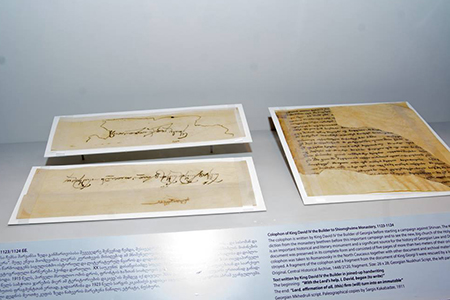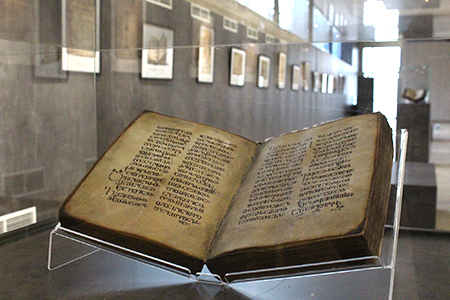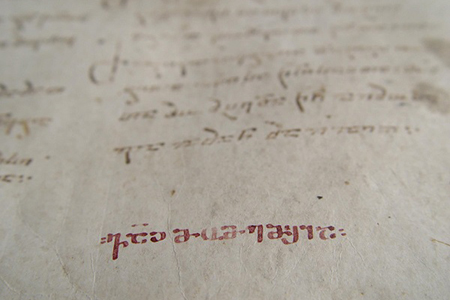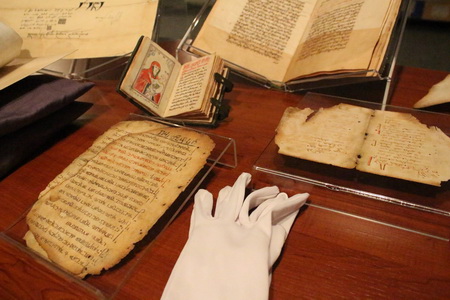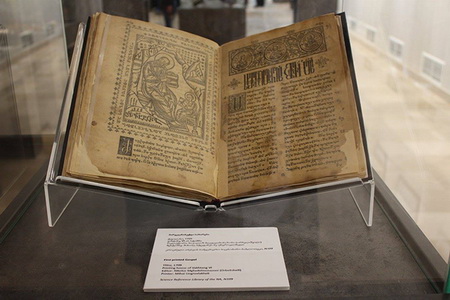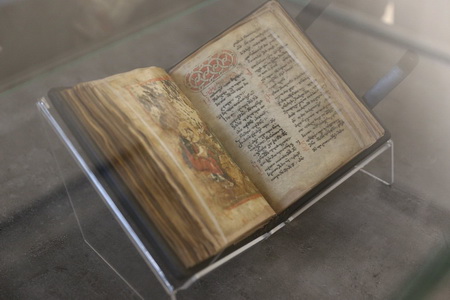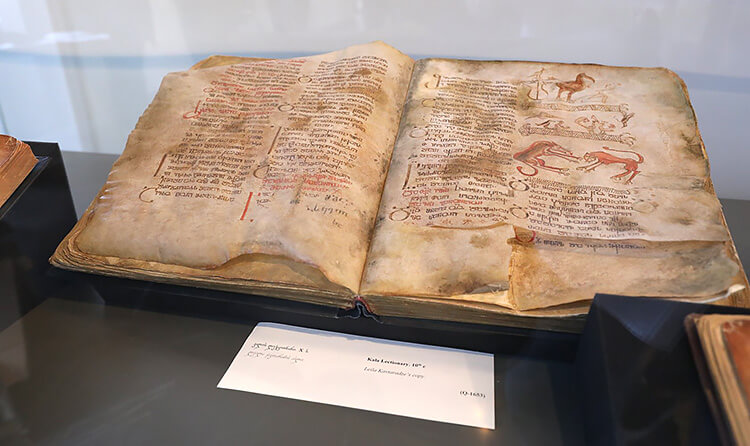Ancient manuscript set for UNESCO submission after fresh discovery
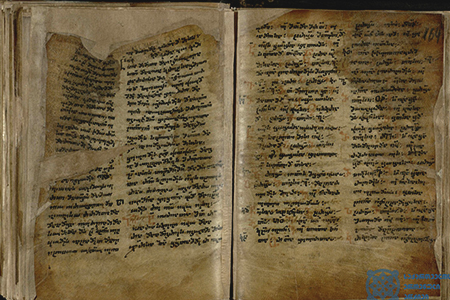
A historical manuscript preserved at the National Archives of Georgia could join a UNESCO list of global cultural heritage after researchers discovered writings dating as far back as the 9th century AD on its pages.
The Tbilisi-based archive announced on Thursday experts had found layers of texts from various historical eras on pages of a gospel manuscript from its collections.
The discovery was made while cataloguing the piece which has not been the subject of separate research by historians before.
The significance of the finding means Georgian state agencies will work to prepare a submission for the manuscript to become part of the UNESCO Memory of the World Register.

The manuscript features layers of text written in different scripts of the Georgian language. Photo: National Archives of Georgia.
In a special release on the discovery, the National Archives said most of the pages of the gospel featured layers of earlier text scraped off to make them reusable for later writing. Historical documents that have undergone this practice are known as ‘palimpsests’ among researchers across the world.
The earlier of the scraped texts in the National Archives manuscript date back to the 9th-10th century AD and are being studied by researchers to identify their contents.
The upper layers are from later eras and feature works including a gospel translation by 11th century Georgian religious and public figure Giorgi Mtatsmindeli.
The National Archives release said the texts found in the manuscript were written in the Asomtavruli, Nuskhuri and Mkhedruli scripts of the Georgian language which were recognised by UNESCO as part of its List of Intangible Cultural Heritage of Humanity in a decision in December 2016.
The manuscript also features notes by re-writers and buyers of the work from the 12th through the 17th centuries.
Made of parchment material, the manuscript features various miniatures as illustrations and was donated to the Tbilisi archive in 1924 from the Tortiza Monastery in central Georgia.
The old layers of scraped off text were found on the document during an ongoing National Archives project launched in 2014 with the goal of updating information on about 1000 manuscripts preserved in the archives.
If accepted for inclusion in the UNESCO Memory of the World Register, the work will be added to four Georgian manuscript collections that became part of the global cultural heritage list from 2011-2015.
The collections include Georgian Byzantine manuscripts that feature important works from Byzantine literary history that have been lost in Greek and other languages but have been preserved in Georgian.
Georgia’s submissions to the UNESCO register also include the Geographical Atlas created by 18th century Georgian geographer and historian Vakhushti Bagrationi, recognised as "the first complete geographical description of Georgia's historical territory”.
 Tweet
Tweet  Share
Share
